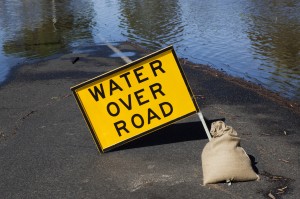How the rise of catastrophe bonds may change our industry
0 July 14, 2014 at 3:51 pm by Peter MorrisIn its Second Quarter 2014 update, Aon Benfield Securities reported that catastrophe bond issuance hit a record high US$ 4.5 billion – the most of any quarter in the history of the insurance-linked securities (ILS) market. The growth of the ILS market raises the question: what changes will the emergence of catastrophe bonds bring to the insurance and reinsurance markets?
Insurance-linked securities, or catastrophe bonds, are a relatively recent addition to the insurance landscape. As an alternative to purchasing coverage from a reinsurer, an insurer will issue an ILS through an investment bank. The purpose of this type of financial instrument is to provide funds to the insurer in the event of a high severity, low frequency event such as a natural disaster. The ILS will specify what major natural catastrophe(s) must occur in order to trigger the release of the bond’s funds to the issuer.
The trigger could be tied to the insurer’s actual losses or it could be tied to the occurrence of a single natural event (e.g. wind speed, ground movement) or a series of natural events. If the bond is triggered, the insurer receives the proceeds of the bond fund. If the bond is not triggered, the funds are returned to the investors. Given the levels of risk and the significant sums of money involved, the purchasers of this type of financial instrument tend to be large, institutional investors. Whereas the risk of default for a traditional bond is tied to the likelihood of the issuer going bankrupt, the risk of default for an ILS is tied to the likelihood of a natural disaster. Because the probability of a natural catastrophe can be difficult to predict, the interest spread for an ILS tends to be higher than the spread for other types of corporate bonds. The higher spreads make catastrophe bonds attractive to investors. This type of financial instrument also allows investors the opportunity to diversify their portfolio since the return on this type of investment is not correlated to the yields on more traditional investments which are tied to interest rate or equity market risks.
Over most of the past twenty years, the ILS market grew steadily. But the ILS market dipped, along with most financial markets, in 2008. Since then, the market for catastrophe bonds has improved. Based on current trends, Aon Benfield predicts that 2014 could be the year that sees the ILS market surpass the peak set in 2007. The report goes on to note that catastrophe bond pricing remained at historic lows during the second quarter of 2014 thereby allowing sponsors to expand coverage at competitive rates. If, as predicted, new capital flows into the ILS market, this will put downward pressure on the spreads currently being offered which will reduce the yield/cost of catastrophe bonds even further. This will, in turn, make catastrophe bonds an even more attractive alternative for insurers.
None of this is encouraging news for traditional reinsurers. The growth of the ILS market has largely come at the expense of reinsurers. Reinsurers have seen a reduction in their market share and, with the loss of market share, a reduction in their ability to influence the insurance market. The reinsurance industry has traditionally been seen as exerting some discipline on the insurance marketplace. In the past, when industry loss ratios climbed and the underwriting results of reinsurers suffered, it was the reinsurance market that would normally trigger a hardening of the market. Reinsurers would accomplish this by increasing in renewal pricing of reinsurance treaties. With increased competition coming from the ILS market, the ability of professional reinsurers to set pricing and to change the course of the industry has diminished.
As the ILS market expands in Canada, it will expand the supply of capacity that is available to insurers. The increase in capacity and the reduction in the cost of that capacity could provide a vehicle for insurers to expand their coverage offerings. Two perils that come to mind are earthquake and flood. This is not about providing naïve capacity. The rating agencies that grade catastrophe bonds, and the institutional investors that buy the bonds, are not amateurs. The capacity that comes from the ILS market is well-attuned to the risks being undertaken. To the extent the growth of the ILS market facilitates an informed expansion of the entire Canadian insurance market, the emergence of catastrophe bonds as an alternative to traditional reinsurance will be a positive development for our insurance industry.
Note: By submitting your comments you acknowledge that insBlogs has the right to reproduce, broadcast and publicize those comments or any part thereof in any manner whatsoever. Please note that due to the volume of e-mails we receive, not all comments will be published and those that are published will not be edited. However, all will be carefully read, considered and appreciated.


Leave a Reply